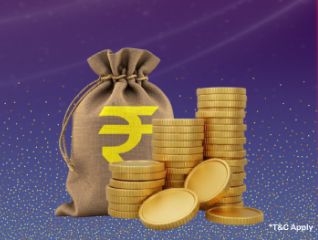Gold Price Expectations in 2025
Gold price trends and outlook for 2025
Gold price expectations in 2025 are showing cautious optimism. Looking back at 2024, gold prices in India experienced notable fluctuations but maintained an upward trend, reflecting its continued appeal as a safe-haven asset. With ongoing global economic uncertainties and geopolitical tensions, demand for gold is expected to remain steady. Investors should keep an eye on international markets, inflation trends, and currency movements, as these factors heavily influence gold prices. While gold remains a reliable long-term investment, short-term price changes are normal. For those planning to invest in gold or use it for financial solutions like gold loans, staying informed and strategic is important to make the most of opportunities in 2025 and manage risks effectively.
Introduction to gold price expectations
Gold continues to be a highly valued asset in 2025, admired not only for its beauty but also as a reliable store of wealth. Investors and economists closely watch gold prices because they often reflect the overall health of the economy. Prices are influenced by factors such as inflation, interest rates, currency movements, and global political events. During times of uncertainty or geopolitical tension, gold tends to rise as people look for a safe place to protect their money. On the other hand, when the economy is stable and interest rates are higher, investors may prefer other assets, causing gold prices to dip. Understanding these trends is essential for making informed investment choices in 2025 and beyond.
Historical trends in gold prices expectations
Analysing historical trends in gold prices provides valuable insights into future expectations. Over the past decade, gold prices have experienced significant fluctuations driven by various economic and geopolitical factors.
| Year | Price (24 karat per 10 grams) | Key influences |
|---|---|---|
| 2020 | Rs.48,651.00 | COVID-19 pandemic, unprecedented stimulus |
| 2021 | Rs.48,720.00 | Ongoing pandemic, inflation concerns |
| 2022 | Rs.52,670.00 | Rising inflation, global economic recovery |
| 2023 | Rs.65,330.00 | Geopolitical tensions, rising gold demand |
| 2024 | Rs.74,175.00 | Inflation trends, USD fluctuations |
| 2025 | Rs.78,500.00* | Global economic recovery, interest rates, safe-haven demand |
These trends underscore the impact of global events on gold prices, highlighting the metal's role as a safe-haven asset during times of uncertainty and its susceptibility to economic policies and currency strength. Understanding these historical patterns is essential for forecasting future price movements.
Know how much you can borrow on your gold jewellery—check your gold loan eligibility instantly for a smooth and transparent process.
Factors affecting gold price expectations
Several factors influence gold price expectations, making it a complex asset to predict. Key factors include:
- Economic indicators: Inflation rates, interest rates, and GDP growth are crucial. High inflation and low interest rates typically boost gold prices as investors seek to preserve value.
- Geopolitical events: Wars, political instability, and trade conflicts can drive demand for gold as a safe haven.
- Currency fluctuations: The value of major currencies, particularly the US dollar, impacts gold prices. A weaker dollar generally makes gold cheaper for foreign investors, increasing demand.
- Market demand: Jewellery, technology, and investment demand, including central bank purchases, significantly affect prices.
- Supply factors: Mining production and recycling rates can influence gold's availability and price.
Understanding these factors is essential for predicting gold price movements and making informed investment decisions.
Economic indicators influencing gold prices
Economic indicators play a pivotal role in shaping gold prices. Key indicators include:
- Inflation rates: High inflation erodes the value of currency, making gold an attractive investment to preserve wealth.
- Interest rates: Lower interest rates reduce the opportunity cost of holding non-yielding assets like gold, increasing its appeal.
- GDP growth: Strong economic growth can reduce the appeal of gold as investors turn to higher-yielding assets, while economic downturns can increase gold demand as a safe haven.
- Currency strength: The value of the US dollar, in particular, has a significant impact. A weaker dollar makes gold cheaper for buyers using other currencies, boosting demand.
- Central bank policies: Policies on gold reserves and monetary measures directly influence market sentiments and prices.
These indicators help investors gauge the likely direction of gold prices, aiding in strategic investment planning.
Practical implications of gold price expectations
Understanding gold price expectations has practical implications for investors, businesses, and policymakers. For investors, accurate predictions can inform buying and selling decisions, optimising returns. Businesses, especially in the jewellery and technology sectors, rely on price forecasts to manage costs and pricing strategies. Policymakers use gold price trends to assess economic stability and guide monetary policy decisions. Furthermore, individuals considering gold loans can benefit from understanding price trends, ensuring they make informed borrowing decisions. Overall, comprehending gold price expectations is essential for making strategic financial decisions in various contexts.
Quick tip: It takes just 2 steps to check your eligibility for a Bajaj Finserv Gold Loan. Enter your mobile number now.
How gold price expectations influence gold loans
Gold price expectations significantly influence gold loans. When prices are expected to rise, borrowers may prefer gold loans to capitalise on future value appreciation, potentially getting better loan terms. Conversely, if prices are anticipated to fall, lenders might tighten borrowing conditions to mitigate risks. Understanding these trends helps both borrowers and lenders make informed decisions.
Impact of rising gold prices on gold loans
Key factors impacting rise in gold price:
- Increased loan amounts: Higher gold prices mean higher valuations, allowing borrowers to secure larger loan amounts.
- Lower loan-to-value ratios: Lenders may offer lower LTV ratios to mitigate risks, despite higher gold prices.
- Higher interest rates: Anticipated rises in gold prices might lead to higher interest rates as lenders hedge against potential declines.
- Increased demand: More borrowers might seek gold loans to leverage higher gold values.
- Risk management: Lenders may implement stricter risk management practices, including more frequent collateral revaluation.
- Market sentiment: Positive sentiment around gold can lead to more favourable loan terms, while negative sentiment can tighten lending criteria.
For more details on interest rates and gold loans, visit our Gold Loan Interest Rate section.
Leveraging gold price expectations for smart gold loans
To leverage gold price expectations for smart gold loans, borrowers should:
- Monitor trends: Stay updated on economic indicators and gold price forecasts to time borrowing effectively.
- Evaluate loan terms: Compare loan-to-value ratios, interest rates, and repayment terms across lenders to find the best deal.
- Consider timing: Borrow when gold prices are rising to maximise loan amounts and potentially secure better terms.
- Plan repayments: Anticipate potential price fluctuations and plan repayments accordingly to avoid financial strain.
- Seek expert advice: Consult financial advisors or experts to understand market trends and make informed decisions.
By understanding and anticipating gold price trends, borrowers can optimise their loan terms and make strategic financial decisions.
Pro tip: Apply in minutes. Money in account instantly with a Bajaj Finserv Gold Loan*
Related Articles
Disclaimer
Bajaj Finance Limited has the sole and absolute discretion, without assigning any reason to accept or reject any application. Terms and conditions apply*.
For customer support, call Personal Loan IVR: 7757 000 000









 Personal Loan
Personal Loan Check Eligibility
Check Eligibility Salaried Personal Loan
Salaried Personal Loan EMI Calculator
EMI Calculator Account Aggregator
Account Aggregator Credit Pulse Report
Credit Pulse Report
 Deals starting @99
Deals starting @99 Min. 50% off
Min. 50% off
 Bajaj Pay
Bajaj Pay Wallet to Bank
Wallet to Bank
 Easy EMI Loan
Easy EMI Loan Savings Offer
Savings Offer Smartphones
Smartphones Led TVs
Led TVs Washing Machines
Washing Machines Laptops
Laptops Refrigerators
Refrigerators Air Conditioner
Air Conditioner Air Coolers
Air Coolers
 Loan Against Shares
Loan Against Shares Loan Against Mutual Funds
Loan Against Mutual Funds Loan Against Insurance Policy
Loan Against Insurance Policy ESOP Financing
ESOP Financing Easy EMI Loan
Easy EMI Loan Two-wheeler Loan
Two-wheeler Loan Loan for Lawyer
Loan for Lawyer Industrial Equipment Finance
Industrial Equipment Finance Industrial Equipment Balance Transfer
Industrial Equipment Balance Transfer Industrial Equipment Refinance
Industrial Equipment Refinance Personal Loan Branch Locator
Personal Loan Branch Locator Used Tractor Loan
Used Tractor Loan Loan Against Tractor
Loan Against Tractor Tractor Loan Balance Transfer
Tractor Loan Balance Transfer Flexi
Flexi View All
View All
 Two-wheeler Loan
Two-wheeler Loan Bike
Bike Scooter
Scooter Electric Vehicle
Electric Vehicle Best Sellers
Best Sellers Popular Brands
Popular Brands

 Trading Account
Trading Account Open Demat Account
Open Demat Account Margin Trading Financing
Margin Trading Financing Share Market
Share Market Invest in IPO
Invest in IPO All stocks
All stocks Top gainers
Top gainers Top losers
Top losers 52 week high
52 week high 52 week low
52 week low Loan against shares
Loan against shares
 Home Loan
Home Loan Transfer your existing Home loan
Transfer your existing Home loan Loan against Property
Loan against Property Home Loan for Salaried
Home Loan for Salaried Home loan for self employed
Home loan for self employed Loan Against Property Balance Transfer
Loan Against Property Balance Transfer Home Loan EMI Calculator
Home Loan EMI Calculator Home Loan eligibility calculator
Home Loan eligibility calculator Home Loan balance transfer
Home Loan balance transfer View All
View All
 Term Life Insurance
Term Life Insurance ULIP Plan
ULIP Plan Savings Plan
Savings Plan Family Insurance
Family Insurance Senior Citizen Health Insurance
Senior Citizen Health Insurance Critical Illness Insurance
Critical Illness Insurance Child Health Insurance
Child Health Insurance Pregnancy and Maternity Health Insurance
Pregnancy and Maternity Health Insurance Individual Health Insurance
Individual Health Insurance Low Income Health Insurance
Low Income Health Insurance Student Health Insurance
Student Health Insurance Group Health Insurance
Group Health Insurance Retirement Plans
Retirement Plans Child Plans
Child Plans Investment Plans
Investment Plans
 Business Loan
Business Loan Secured Business Loan
Secured Business Loan Loan against property
Loan against property Loans against property balance transfer
Loans against property balance transfer Loan against shares
Loan against shares Home Loan
Home Loan Loans against mutual funds
Loans against mutual funds Loan against bonds
Loan against bonds Loan against insurance policy
Loan against insurance policy
 Apply for Gold Loan
Apply for Gold Loan Transfer your Gold Loan with Us
Transfer your Gold Loan with Us Gold Loan Branch Locator
Gold Loan Branch Locator
 ULIP Plan
ULIP Plan Savings Plan
Savings Plan Retirement Plans
Retirement Plans Child Plans
Child Plans Free Demat Account
Free Demat Account Invest in Stocks
Invest in Stocks Invest in IPO
Invest in IPO Margin Trading Facility
Margin Trading Facility Fixed Deposit Branch Locator
Fixed Deposit Branch Locator
 Check your Credit Score
Check your Credit Score
 New Car Loan
New Car Loan Used Car Loan
Used Car Loan Loan Against Car
Loan Against Car Car Loan Balance Transfer and Top-up
Car Loan Balance Transfer and Top-up My Garage
My Garage
 Get Bajaj Prime
Get Bajaj Prime
 Mobiles on EMI
Mobiles on EMI Electronics on EMI Offer
Electronics on EMI Offer  Iphone on EMI
Iphone on EMI LED TV on EMI
LED TV on EMI Refrigerator on EMI
Refrigerator on EMI Laptop on EMI
Laptop on EMI Kitchen appliances on EMI
Kitchen appliances on EMI Washing machines
Washing machines
 Personal Loan EMI Calculator
Personal Loan EMI Calculator Personal Loan Eligibility Calculator
Personal Loan Eligibility Calculator Home Loan EMI Calculator
Home Loan EMI Calculator Home Loan Eligibility Calculator
Home Loan Eligibility Calculator Good & Service Tax (GST) Calculator
Good & Service Tax (GST) Calculator Flexi Day Wise Interest Calculator
Flexi Day Wise Interest Calculator Flexi Transaction Calculator
Flexi Transaction Calculator Secured Business Loan Eligibility Calculator
Secured Business Loan Eligibility Calculator Fixed Deposits Interest Calculator
Fixed Deposits Interest Calculator Two wheeler Loan EMI Calculator
Two wheeler Loan EMI Calculator New Car Loan EMI Calculator
New Car Loan EMI Calculator Used Car Loan EMI Calculator
Used Car Loan EMI Calculator All Calculator
All Calculator Used Tractor Loan EMI Calculator
Used Tractor Loan EMI Calculator
 Hot Deals
Hot Deals Clearance Sale
Clearance Sale Kitchen Appliances
Kitchen Appliances Tyres
Tyres Camera & Accessories
Camera & Accessories Mattresses
Mattresses Furniture
Furniture Watches
Watches Music & Audio
Music & Audio Cycles
Cycles Mixer & Grinder
Mixer & Grinder Luggage & Travel
Luggage & Travel Fitness Equipment
Fitness Equipment Fans
Fans
 Personal Loan for Doctors
Personal Loan for Doctors Business loan for Doctors
Business loan for Doctors Home Loan
Home Loan Secured Business Loan
Secured Business Loan Loan against property
Loan against property Secured Business Loan Balance Transfer
Secured Business Loan Balance Transfer Loan against share
Loan against share Gold Loan
Gold Loan Medical Equipment Finance
Medical Equipment Finance
 Smart Hub
Smart Hub ITR Service
ITR Service Digi Sarkar
Digi Sarkar
 Savings Offer
Savings Offer Easy EMI
Easy EMI Offer World
Offer World 1 EMI OFF
1 EMI OFF New Launches
New Launches Zero Down Payment
Zero Down Payment Clearance Sale
Clearance Sale Bajaj Mall Sale
Bajaj Mall Sale
 Mobiles under ₹20,000
Mobiles under ₹20,000 Mobiles under ₹25,000
Mobiles under ₹25,000 Mobiles under ₹30,000
Mobiles under ₹30,000 Mobiles under ₹35,000
Mobiles under ₹35,000 Mobiles under ₹40,000
Mobiles under ₹40,000 Mobiles under ₹50,000
Mobiles under ₹50,000
 Articles
Articles
 Overdue Payments
Overdue Payments Other Payments
Other Payments
 Document Center
Document Center Bank details & Documents
Bank details & Documents Tax Invoice Certificate
Tax Invoice Certificate
 Do Not Call Service
Do Not Call Service
 Hamara Mall Orders
Hamara Mall Orders

 Fixed Deposit (IFA) Partner
Fixed Deposit (IFA) Partner Loan (DSA) Partner
Loan (DSA) Partner Debt Management Partner
Debt Management Partner EMI Network Partner
EMI Network Partner Became a Merchant
Became a Merchant Partner Sign-in
Partner Sign-in
 Trade directly with your Demat A/c
Trade directly with your Demat A/c ITR
ITR My Garage
My Garage
 Live Videos - Beta
Live Videos - Beta
 Savings Offer
Savings Offer Smartphones
Smartphones LED TVs
LED TVs Washing Machines
Washing Machines Laptops
Laptops Refrigerators
Refrigerators Air Conditioners
Air Conditioners Air Coolers
Air Coolers Water Purifiers
Water Purifiers Tablets
Tablets Kitchen Appliances
Kitchen Appliances Mattresses
Mattresses Furniture
Furniture Music and Audio
Music and Audio Cameras & Accessories
Cameras & Accessories Cycle
Cycle Watches
Watches Tyres
Tyres Luggage & Travel
Luggage & Travel Fitness Equipment
Fitness Equipment Tractor
Tractor Easy EMI Loan
Easy EMI Loan
 vivo Mobiles
vivo Mobiles OPPO Mobiles
OPPO Mobiles Xiaomi Mobiles
Xiaomi Mobiles Sony LED TVs
Sony LED TVs Samsung LED TVs
Samsung LED TVs LG LED TVs
LG LED TVs Haier LED TVs
Haier LED TVs Godrej Refrigerators
Godrej Refrigerators Voltas Washing Machines
Voltas Washing Machines
 New Tractor Loan
New Tractor Loan Used Tractor Loan
Used Tractor Loan Loan Against Tractor
Loan Against Tractor Tractor Loan Balance Transfer
Tractor Loan Balance Transfer
 New Car Loan
New Car Loan New Cars Under ₹10 Lakh
New Cars Under ₹10 Lakh New Cars – ₹10–₹15 Lakh
New Cars – ₹10–₹15 Lakh New Cars – ₹15–₹20 Lakh
New Cars – ₹15–₹20 Lakh New Cars – ₹20–₹25 Lakh
New Cars – ₹20–₹25 Lakh New Car Brands
New Car Brands Petrol – New Cars
Petrol – New Cars Diesel – New Cars
Diesel – New Cars Electric – New Cars
Electric – New Cars CNG – New Cars
CNG – New Cars Hybrid – New Cars
Hybrid – New Cars





